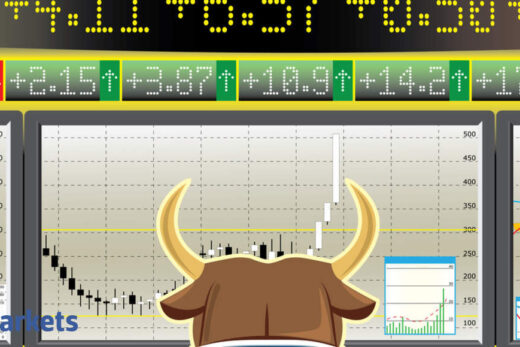After Friday’s chaos, would you be cautious for the next few days?
We should see more corrections in March. Whether that correction happens today or we a bounce back today is very tough things to predict, but overall, if you look at the structure of the market in terms of valuations and the fact that what has led to the sell-off has been a spike up in bond yields globally, should continue because in the US economy, there is a recovery underway. On top of that, they are looking at another stimulus and that could overheat the economy.
Banks make more money when a new cycle starts. How come banks led the selling on Friday?
Normally bond yields will move up when the recovery cycle has started and there is an expectation of significant recovery. Obviously next year, there will be a significant recovery simply because this year has been so bad. But the inflationary pressures are building up too fast and that is the risk.
The way the commodities have rallied is very unlike most other cycles where just in the first few months of the cycles, you do not see commodity prices doubling across the board. That puts extreme risk on the bond yields and the interest rates just at the time when the economy is about to recover. Herein lies the risk.
Secondly, there was a significant risk of NPA buildup last year when Covid happened. The expected recovery cycle is very rapid and a lot of people are building on that, assuming that the NPAs will be lower than what was initially expected next year. From the initial assessments, all the banks’ managements have said they will be lower for sure but how much lower will depend on how strong the recovery is and how much time interest rates can remain accommodative for the economy.
The central bank has been guiding for a prolonged period of pause but if they suddenly act the next time and remove the accommodative stance, that is usually not taken well by financials. We should ideally see some more adjustment before things stabilise as the recovery cycle kicks in once the corrective phase is over. Then we will see an up move in some of the financials. Obviously, many of them will correct but one cannot buy every stock at every price like ICICI went for Rs 670-680. Today it is at Rs 600. If it comes down to the Rs 530-540 levels where it started this move after the last quarter results, that could provide an entry opportunity.
Two-wheelers are topping, four-wheelers are flat. Are CVs picking up?
February numbers are still to come out but all surveys and indicators are showing that the two-wheeler segment led the market up. The two-wheeler stocks have been seeing some correction. They should correct more because commercial vehicles demand could get constrained as input price pressures have led to price hikes. There has been a significant increase in freight rates which could impact demand in the near term. So, near term we need to watch out for the numbers as they come out over the next two-three months but two-wheeler stocks are not the space to be in.
In my view Maruti could be something to be looked at as the market corrections get over because they have corrected reasonably now and the commentary and ground level indicators for that do not look as bad. On the commercial vehicle side, unfortunately there are not too many pure plays. Tata Motors is more a global play and Ashok Leyland is overvalued in the near term. It is better to wait.
Would you see the selling in auto stocks as an opportunity to get in at lower levels?
In my view we could see more pressure coming on auto names simply because of the fact that demand has started cackling and at the same time we are seeing a significant increase in input cost pressure prices. So the operating leverage that was expected out of sales growth that might be lower than expectation and the margin pressures are high.
In the next one or two quarters, auto companies’ results might not be as great as people expected. It is a very over owned segment because everyone put money into two-wheeler stocks and everyone thought it would continue.The valuations right now are no longer cheap like from where these stocks started off. They are at valuation levels which can only sustain with a very significant volume growth over the next two years which might not come through. We have to wait for opportunities in this sector and I do not think this is a good time to invest in the auto sector.
Is it time to still buy a Tata Steel, a Nalco or Vedanta, maybe a Coal India?
The challenge is that the global economy is in a very complicated scenario today. A lot of steroids have been put in and as such, those steroids have taken things both in terms of commodity prices, stock markets and everything. Now what happens when these steroids are removed? Can the economy stand up on its own? That is the question which should be debated.
If the markets keep on moving up, it is going to be the biggest challenge. For the western economies, it is going to be very tough given the kind of debt to GDP which has come up in most of these countries. Growth will remain a challenge in the long run. This year might be faster than expected recovery, but going forward, the challenge is what do commodities do?
Even the commodity stocks may have seen a near term peak and we will need to see whether prices can go up further from here because the move has been very sharp. Typically, commodity stocks are leveraged to the underlying commodity prices. Even if the underlying commodity has gone up 50%, if it corrects by 5-7%, typically the stocks correct much more. That could actually happen except for oil which is in a cycle of its own and which did not move at all with other commodities. It is moving up now. As demand comes in, unless the supply is restored, crude can actually see a big spike up and that could benefit a company like Vedanta.



